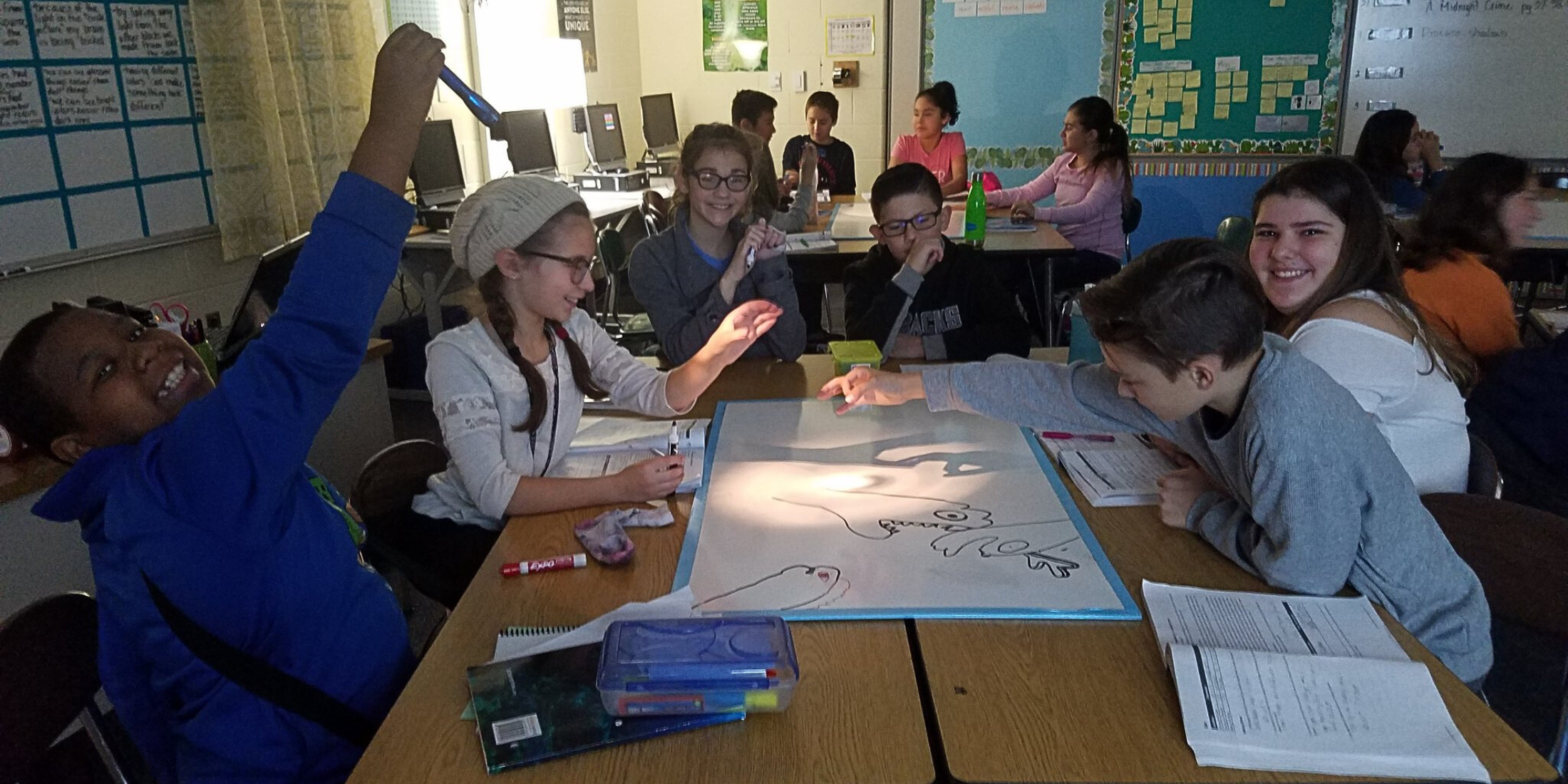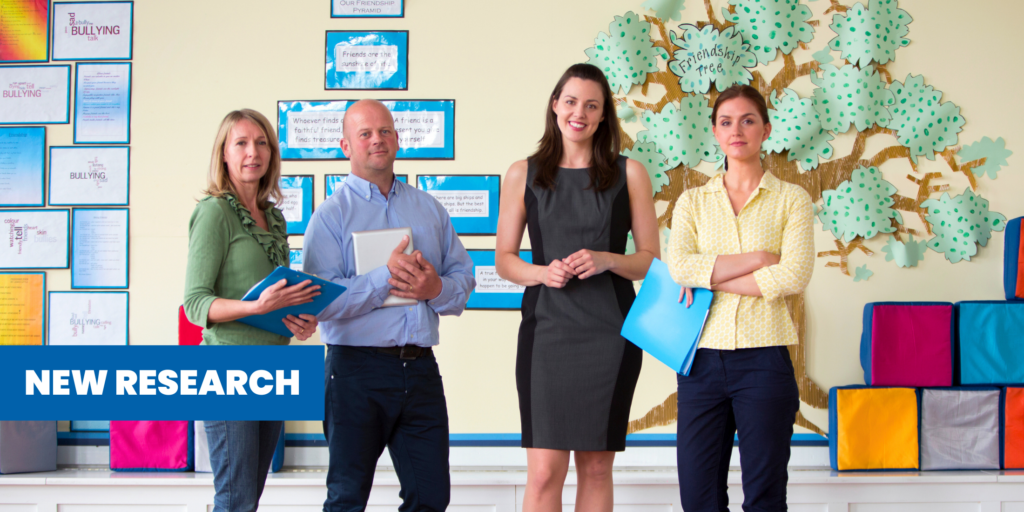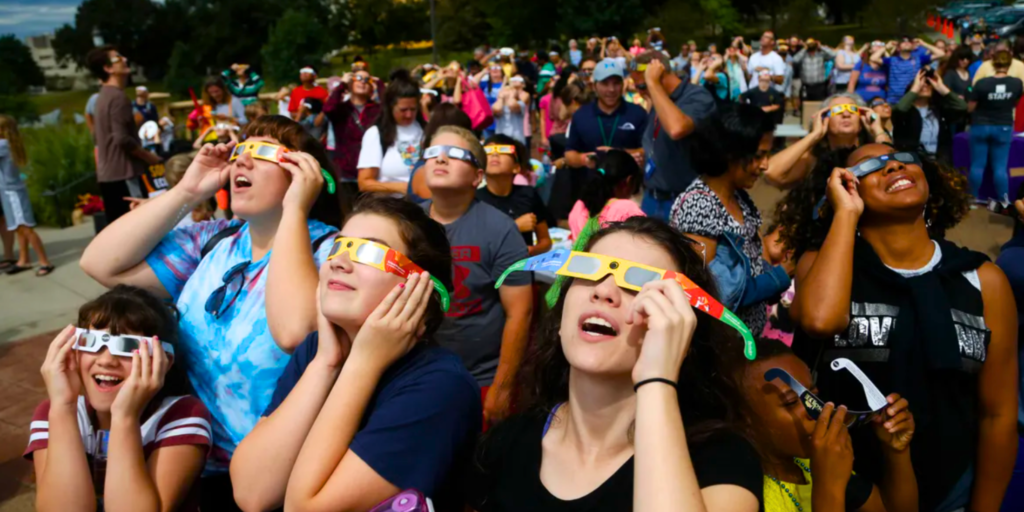Navigating Inclusivity in Science Education through Universal Design Learning
![OpenSciEd Universal Design for Learning Header Image (OSE students by nicolejbolduc) [PHOTO: 7th grade students analyzing data together in an exercise from OpenSciEd Unit 6.4. CREDIT: @nicolejbolduc/Twitter]](https://activatelearning.com/wp-content/uploads/2023/11/OpenSciEd-Universal-Design-for-Learning-Header-Image-OSE-students-by-nicolejbolduc.png)
Quick Take: This recap of the capstone session of our 5-part webinar series on 3-Dimensional Learning explores the transformative power of Universal Design for Learning (UDL) in science education, synthesizing key themes from the series on making thinking visible, nurturing sensemaking, building equitable discussions, and innovating assessments into a comprehensive approach that engages all students. Discover strategies for reducing barriers through OpenSciEd's anchoring phenomena lesson.
Welcoming the Future of Science Education with Open Arms
As we close out our 5-part professional learning webinar series on implementing 3-dimensional learning, it’s time to reflect on the key takeaways that will empower educators to transform their science instruction. Each session provided impactful insights and a roadmap to deeper learning, from exploring strategies to making student thinking visible to designing equitable assessments.
Now, we come full circle to the unifying framework that binds together all the research-based best practices we’ve covered throughout this series — Universal Design for Learning (UDL). UDL principles offer the foundation for creating consistently inclusive learning environments.
Why does this matter? The traditional one-size-fits-all approach to education must be revised in an era where the classroom is a melting pot of abilities, languages, and cultures. Universal Design for Learning is a methodology that not only recognizes but celebrates this diversity. By proactively planning through the UDL lens of learner variability, we can significantly reduce learning barriers to engage all students in classroom experiences that are as dynamic as they are diverse.
Read on for a recap of this capstone webinar’s key ideas and resources, presented by Rebecca Garelli, Activate Learning’s Professional Learning Specialist, that will equip you to further embed UDL principles in your teaching. Discover ways that the OpenSciEd Anchoring Phenomenon Lesson is designed to address some of the principles of Universal Design for Learning. We’ll also look back at the insights we’ve shared throughout this series.
Let’s get started! 🚀
A Pathway Through Innovative Science Education
Our journey through the 3-Dimensional Snapshot Webinar Series has been nothing short of a transformative educational experience. As we prepare to delve into the intricacies of (UDL), it’s essential to look back and appreciate the path we've traversed, enriching our teaching toolkits every step of the way.
The first four webinars in the series laid the foundation for implementing 3-dimensional learning. Our webinar series began with Making Thinking Visible, where we introduced strategies for students to articulate and visualize their scientific reasoning, emphasizing writing and drawing in sensemaking. This was followed by Student Sensemaking, where we used an OpenSciEd lesson to refine teaching methods, encouraging students to explore beyond traditional learning models.
In Equitable Discussions, we focused on fostering inclusive classroom conversations, valuing every student's voice, and highlighting equity and classroom culture. The series then progressed to Innovative Assessments, exploring advanced assessment strategies in 3-dimensional learning to support and measure student growth and understanding.
From visible thinking routines to equitable participation and personalized evaluations, these interactive sessions equipped educators with research-based strategies to engage students in doing real science.
This final session on UDL is a synthesis of the core themes in this series. It’s about taking the collective wisdom from making thinking visible, enhancing student sensemaking, nurturing equitable discussions, and innovating assessments, then weaving them into a comprehensive approach that reaches every learner.
As we reflect on these sessions, it becomes clear that the journey of 3-dimensional learning is about evolving and adapting – not just for our students but for teachers as well. Each webinar has been a stepping stone towards a more inclusive, dynamic, and responsive approach to science education, leading us to the threshold of UDL. On this frontier, every student’s potential is recognized, nurtured, and celebrated.
Webinar Highlights: A Comprehensive Framework for Universal Design Learning with OpenSciEd
![OpenSciEd Students in Science Class (OSE students by nicolejbolduc) [PHOTO: 7th grade students analyzing data together in an exercise from OpenSciEd Unit 6.4. CREDIT: @nicolejbolduc/Twitter]](https://activatelearning.com/wp-content/uploads/2023/11/OpenSciEd-Students-in-Science-Class-OSE-students-by-nicolejbolduc.png)
In this final chapter of our series, Rebecca Garelli presented strategies and examples for reshaping educational paradigms using UDL. The session was anchored around the driving question: How do we enact and modify curriculum to reduce barriers and leverage student resources?
Rebecca began the session with a reflective activity, prompting participants to contemplate the diversity, strengths, and challenges in their classrooms, highlighting the urgent need for strategies like UDL. She then defined UDL as a proactive framework for optimizing teaching and learning, designed to accommodate learner variability rather than perceiving disabilities as deficits within students.
She introduced the three main UDL principles, aligning them with the 'how,' 'what,' and 'why' of learning.
- Engagement: The Why of Learning. This principle revolves around stimulating students' interests and motivation to learn. It emphasizes creating challenges that are aptly suited to engage students, encouraging sustained effort and self-regulation.
- Representation: The What of Learning. UDL encourages presenting information in multiple formats to cater to different learning modalities. This approach allows students to grasp concepts in a way that resonates best with them.
- Action and Expression: The How of Learning. This principle focuses on providing students with different ways to express what they know. It promotes flexibility in assessments and encourages diverse means of demonstration, like models, drawings, or presentations.
Through a detailed walkthrough of OpenSciEd’s Mount Everest lesson, Rebecca demonstrated how each element of UDL was woven into the fabric of the lesson plan, creating a learning experience that was accessible, engaging, and effective for all students.
- Engagement Through Real-World Phenomena: The lesson began with an intriguing exploration of Mount Everest’s movement, particularly during an earthquake. This approach exemplified the first UDL principle, engaging students by connecting learning to real-world phenomena that evoke curiosity and interest.
- Diverse Representation for Comprehensive Understanding: By incorporating multiple media formats, including videos and text, the lesson showcased the UDL principle of Representation. This diversity in content presentation caters to various learning styles, ensuring that concepts are accessible to all students.
- Empowering Expression: In alignment with the UDL principle of Action and Expression, students are encouraged to represent their ideas through various means. Whether drawing models or discussing in groups, this approach validates diverse forms of expression, catering to individual strengths and preferences.
The webinar highlighted how UDL prioritizes the strengths and preferences of each learner, acknowledging that diversity in the classroom is not a challenge to overcome but a resource to embrace. Special attention was given to how UDL principles support learners with disabilities, emergent multilingual students, and students from culturally diverse backgrounds. Educators can ensure that all students are included by designing lessons with these considerations.
Rebecca highlighted the strategic nature of implementing UDL in science education. It’s about intentionally designing flexible and accommodating lessons from the outset. She also emphasized the educator’s role in delivering content and creating learning experiences that are adaptable, engaging, and respectful of each student’s learning journey.

Key Webinar Takeaways
Let’s look at the insights and lessons that have emerged from this session to guide educators in consistently applying UDL principles:
- Effective teaching requires proactively planning for learner variability vs reacting after the fact. UDL offers research-based ways to address differences from the start.
- Checking curriculum and instruction against UDL checkpoints identifies concrete improvement areas to eliminate barriers to learning goals.
- While this webinar completed the 5-part series, the real work lies ahead. Ongoing refinement is critical for UDL implementation.
- Educators are encouraged to share ideas and feedback on integrating UDL to create more inclusive classrooms.
- UDL principles not only benefit students with disabilities but ultimately enhance learning experiences for all by focusing on engagement, representation, expression, and barrier removal.
- The ending reflection showed how deeply participants valued collaborative learning. Extend your journey by rewatching webinars with colleagues.
For more insights, watch the webinar video replay on YouTube [HERE] and download the presentation and free UDL resources Rebecca shared [HERE].
The Journey Ahead: A Commitment to Continuous Learning in Science Education
As educators, our driving purpose is to equip students with the knowledge, skills, and mindsets to shape a bright future filled with possibility. Implementing inclusive learning strategies like Universal Design for Learning brings us closer to that goal.
We hope you found this 5-part professional learning webinar series on 3-Dimensional Learning insightful for enhancing your instructional practices to be more student-centered and responsive to learner variability. Thank you for your engagement—your dedication will transform classrooms!
We invite you to continue your journey by revisiting the webinars and their recaps in this series, archived [HERE]. To get notified of upcoming events and additional resources, subscribe to our Deeper Learning newsletter [HERE]. If you’d like to learn more about our unique, personalized professional learning and OpenSciEd implementation, contact us anytime [HERE].
Keep the feedback and insights coming on how you are applying these research-based strategies. It’s our privilege to partner in empowering every student to unleash their limitless potential.
Onward, upward, and into the future! 🚀
* * * * *
[Header Photo Credit: 7th grade students analyzing data together in an exercise from OpenSciEd Unit 6.4. CREDIT: @nicolejbolduc/Twitter]




